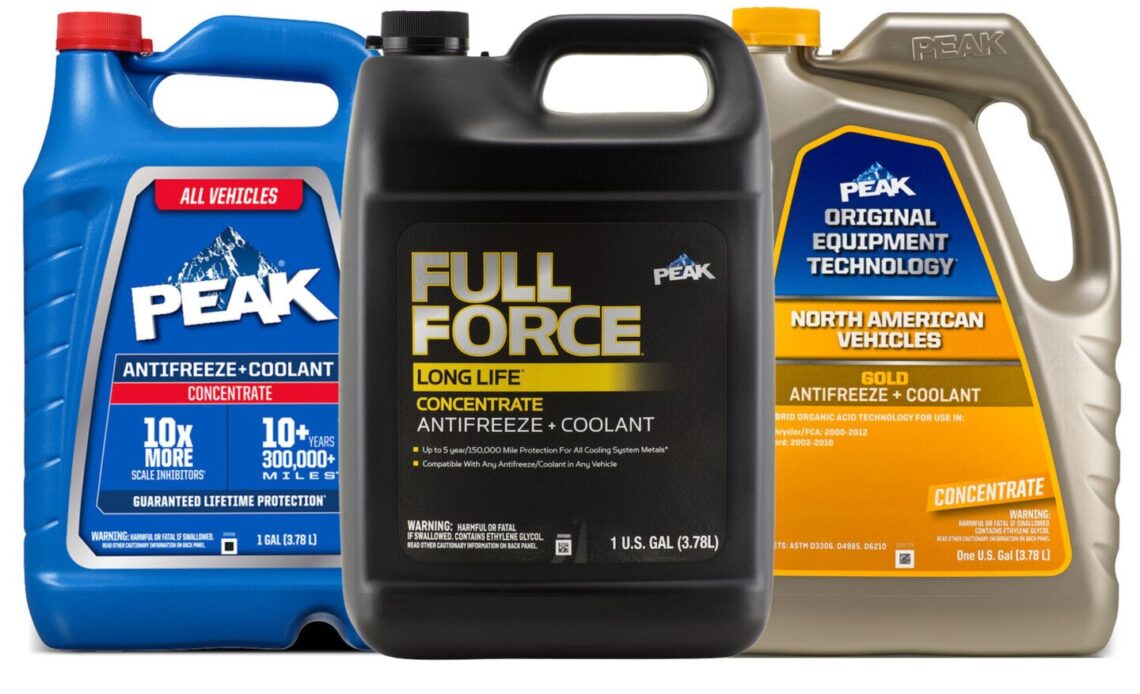When discussing which antifreeze for any given truck or car, one thing is certain — it can be a confusing subject. Before 1990, it was simple. You went to the store and bought “the green stuff,” mixed it with water, and were done. That is not the case anymore. Not only are there various colors of antifreeze, but that variation denotes an even deeper difference. The question of which antifreeze to use is more confusing than ever.
Since the antifreeze running through your engine does not have an unlimited lifespan, you will need to change it from time to time. That said, how do you know which antifreeze to use? I could say look at your owner’s manual, but nobody ever does. That’s why I reached out to the people at Old World Industries (OWI), the makers of PEAK antifreeze to get some solid information.
Which Antifreeze — There Is A Difference?
To start with, traditional antifreeze (that old green stuff) is known as IAT. That acronym correlates to Inorganic Acid Technology. It is fortified with silicates and phosphates, which are used to keep corrosion down within those early cooling systems that were made of brass, copper, and cast iron.
When the 1980s rolled around, cars began to incorporate more aluminum parts and rubber seals in the system. At first, no one suspected the coolant as being the culprit for issues that started to arise. For example, the silicates were shown to cause large amounts of scale to form in the cooling system when they came in contact with aluminum. Phosphate, well, over time, they dried and corroded anything rubber, like water pump seals. What’s more, the life expectancy of IAT antifreeze is roughly 36,000 miles. If it remains in the system longer, electrolysis corrodes the system. It was during the early ’90s that Organic Acid Technology (OAT) was developed.
First and foremost, OAT antifreeze is devoid of both phosphates and silicates and offers similar corrosion resistance as the green mix. It also has a replacement interval of 150,000 miles or generally, five to seven years. Us older guys recognize the early version of OAT as DexCool.
Many truck owners learned the hard way that mixing traditional IAT (green) antifreeze with an OAT antifreeze can cause a world of problems. Early on, OAT got a lot of grief because unknowing customers were mixing traditional green IAT antifreeze into their Dexcool systems. Over time, this blend creates a brown nasty sludge. Neither antifreeze was to fault, it was the blending…
Click Here to Read the Full Original Article at DragzineDragzine…

